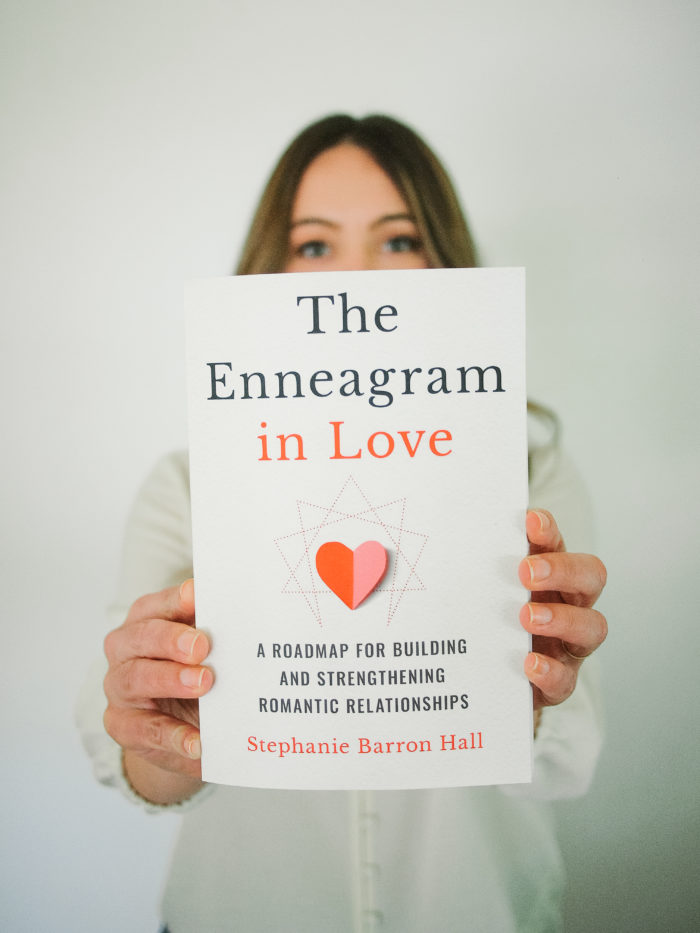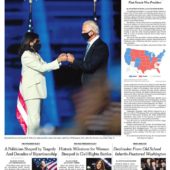
Last May, I noted that the question “What number are you?” seemed to be coming up for me frequently—with other parents during a play date, on a Saturday morning workout with a girlfriend, or maybe at a meeting of a book club. “Enneagram numbers are everywhere, promising to help us to better understand ourselves, our relationships—even our parenting styles.” I wasn’t sure, however, whether I was a skeptic or a believer, and so I wrote a post about the Enneagram hoping to hear about others’ relationship to the test. One reader wrote that they find the types to be thought-provoking tools. Another wrote that it was especially revealing when she and her husband compared results: it was “like marriage counseling, really, to see how our types live together, affect each other, and do life.”
So I was especially intrigued to meet Stephanie Hall, just after she had moved to Sacramento, and learn that she is a certified Enneagram coach. Her book, The Enneagram in Love: A Roadmap for Building and Strengthening Romantic Relationships has just been released—an exploration of how the nine types interact in relationships—and I asked if she would share the inspiration for writing it, along with some of the questions people ask her most often. Here’s what she had to say…

I’ve always been interested in human personality, but I first learned about the Enneagram in 2015. I actually found my type (type 3) the way I tell people not to find their types now—through a quick, free, online test. When the moniker “The Achiever” popped on my screen, I thought YES! I WON! I was excited to be named the top achiever of this new (to me) tool.
As I began to learn more about the Enneagram, that enthusiasm for my type faded. I read things about myself that were both true and unflattering. I read aspects of my personality that I thought I had been so good at hiding… and I learned that perhaps I was less skilled at hiding them than previously assumed. There was a particular comfort in feeling so seen, yet an equal amount of shame at feeling so exposed. For a while, I even wished I could change my type.
But as I sat with those uncomfortable aspects of myself, something interesting began to happen: I began to change. I started reflecting on what I didn’t like, examining what motivated those actions, and then breaking the pattern. It was slow at first, but over the years, I began to see real growth in myself. This growth is actually what has propelled my work with the Enneagram and my desire to share it with others: once I saw more empathy and growth in myself, I had healthier connections with others, more self-acceptance, and deeper self-understanding.
Seeing growth in myself and my relationships using the Enneagram has inspired me to share this tool with others. And like any good growth tool: the work is never done. I hope readers of both this post and my new book will invest in the ongoing work of personal growth using the Enneagram as a tool.
Any social media account is bound to get comments and direct messages, but the Enneagram is so complex that I often find myself inundated with questions and requests for clarification. Below, I’ve spelled out the three most common questions I hear regarding the Enneagram and my book, The Enneagram in Love…
I don’t know what the Enneagram is or what my type is. Where can I start?
The Enneagram is a personality tool that describes 9 motivation-based archetypes. It is meant to be used to cultivate self-awareness and empathy so that we can grow and have stronger connections with others. When considering Enneagram type, it’s important to focus on motivation (not behavior). As a result, I don’t recommend taking online tests—instead, I recommend reading about the different Enneagram types and reflecting on your own core motivations. Because the Enneagram is about self-discovery and growth work, it’s important to begin your journey by using reflection as a tool toward self-knowledge. Tests might be quick and easy, but they don’t typically offer the lasting change needed.
If you’ve already taken a test, that’s okay! Keep the types highlighted by the test in mind as you read. Which type fits best? Why? Write about it in your journal, listen to podcast episodes from people who share your Enneagram type, and consider how it impacts your life. You can find a free self-typing tool on my website, or in my book.
A couple of guidelines:
We each have one core Enneagram type. Enneagram type does not change throughout life. Focus on underlying motivation rather than behavior.
As an example, many of us show up for work each day and do a really good job, but for different reasons. A 3 might show up because they are working hard to get a promotion and get recognized as doing an amazing job, whereas a 6 might show up because they are driven by a sense of duty and they are focused on creating stability and financial security for themselves. Same behavior—different motivations.
Which Enneagram types are most compatible?
When talking about relationships, this is by far the most common question I hear. And I get it! Many personality and typology tools offer guidance on which pairings work best, but it’s not so cut and dry with the Enneagram. While certain type pairings might be more common than others, that doesn’t necessarily mean they are the only pairings that work. In reality, any pairing can work if both individuals are willing to show up and put in the effort.
Here’s an excerpt from The Enneagram in Love to further explain:
“If you were hoping to use the Enneagram as a roadmap to your next date, I’ve got bad news for you: there is no such thing as a ‘most compatible’ Enneagram pairing. This insight often leaves love-seekers disappointed, but relationships are ultimately about people who are working toward growth and health as individuals, who are willing to show up and do the hard work in relationships, and who are kind, loving, and responsive to their partners. That’s it. Any pairing can work well if you’re willing to put in the effort. So here’s the good news: if you are already in a relationship, you can breathe a sigh of relief knowing that you are not with the wrong Enneagram type.”
I’m not in a relationship. Can I still get something out of this book?
Absolutely! I’ll first reiterate that this book was written with romantic relationships in mind: I even sent out a survey to my Instagram followers to gain an even deeper understanding of all 45 type pairings. My own experience coaching, reading, and this original research all informed what I’ve written in the book. It’s worth noting, however, that the beauty of the Enneagram is that if you learn it for one environment it can be used in various aspects of life.
Because our Enneagram type is consistent across all contexts, the Enneagram information intended for romantic relationships can be applied elsewhere too. Primarily, the type pairings shared in this book are most helpful for those who we are in close relationship with, like close friends, family members, and roommates. All close relationships, romantic or otherwise, will likely experience similar dynamics to those noted in this book.
I’ll share a rough approximation of the table of contents so you can get a better understanding:
- What is the Enneagram? / History / The system / Finding your type / Each type in detail
- The Enneagram in love / How each type shows up in romantic relationships / Intimacy for each type
- The Type Pairings (For example 1 & 2, 6 & 8, 4 & 9, etc. There are 45 distinct pairings, and each is discussed equally.) / Description, strengths, & weaknesses are presented for each pairing
Thank you, Stephanie! Congratulations on your book release!
What do you think? Do you know your number? How has knowing your number made a difference for you?
Stephanie Barron Hall (M.A. Organizational Communication, 2020) is a speaker, certified Enneagram coach, and the author of the upcoming book, The Enneagram in Love: A Roadmap for Building and Strengthening Romantic Relationships. Steph founded her instagram page, @ninetypesco, in 2017 as a way to explore her own interest in the Enneagram, and it has since grown into a community of people who are all learning about the Enneagram, themselves, and their relationships together. Steph specializes in bringing clarity to complex concepts and communicating the Enneagram in a way that is relatable and concise so that it can be transformative & accessible to all.






































0 Comments